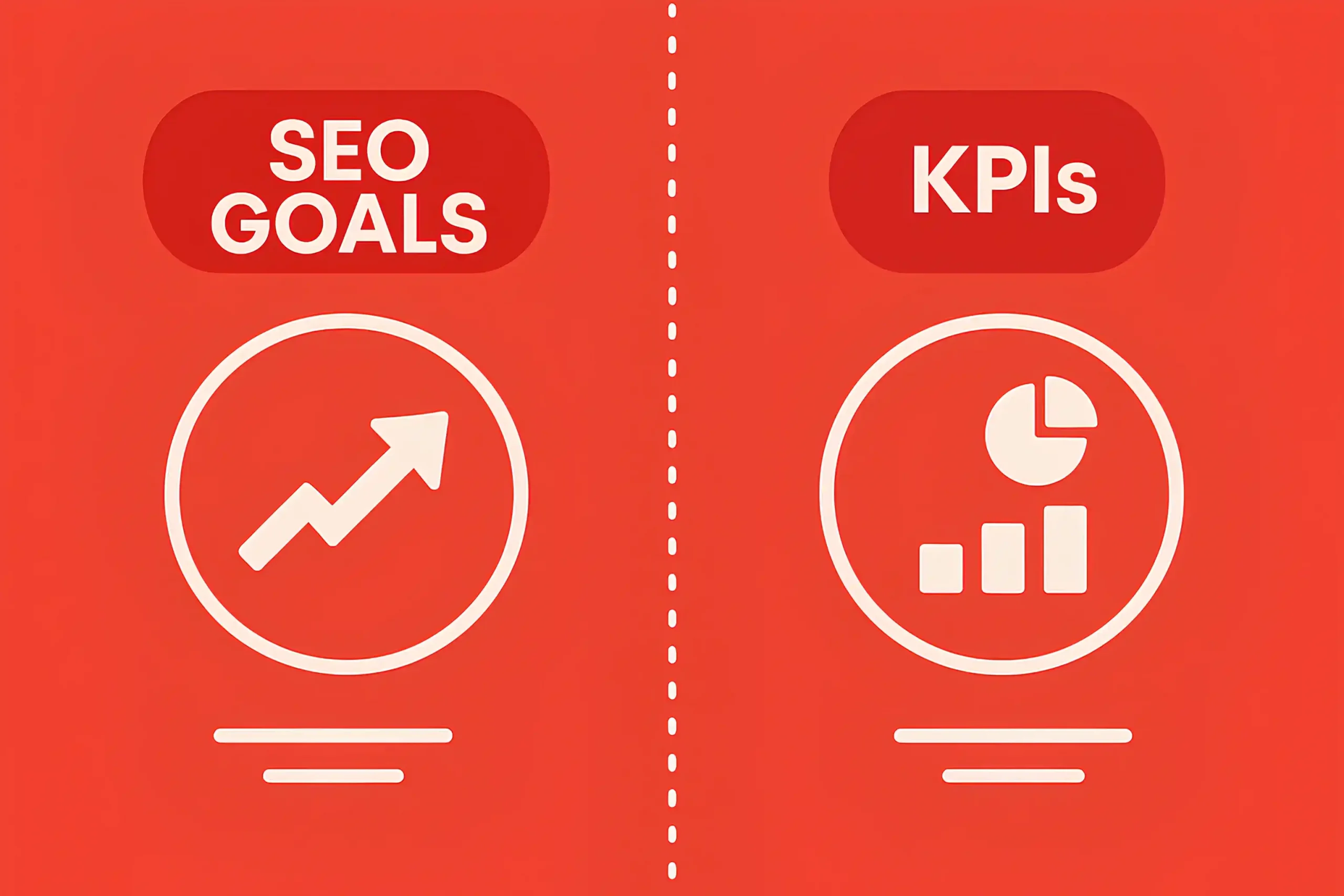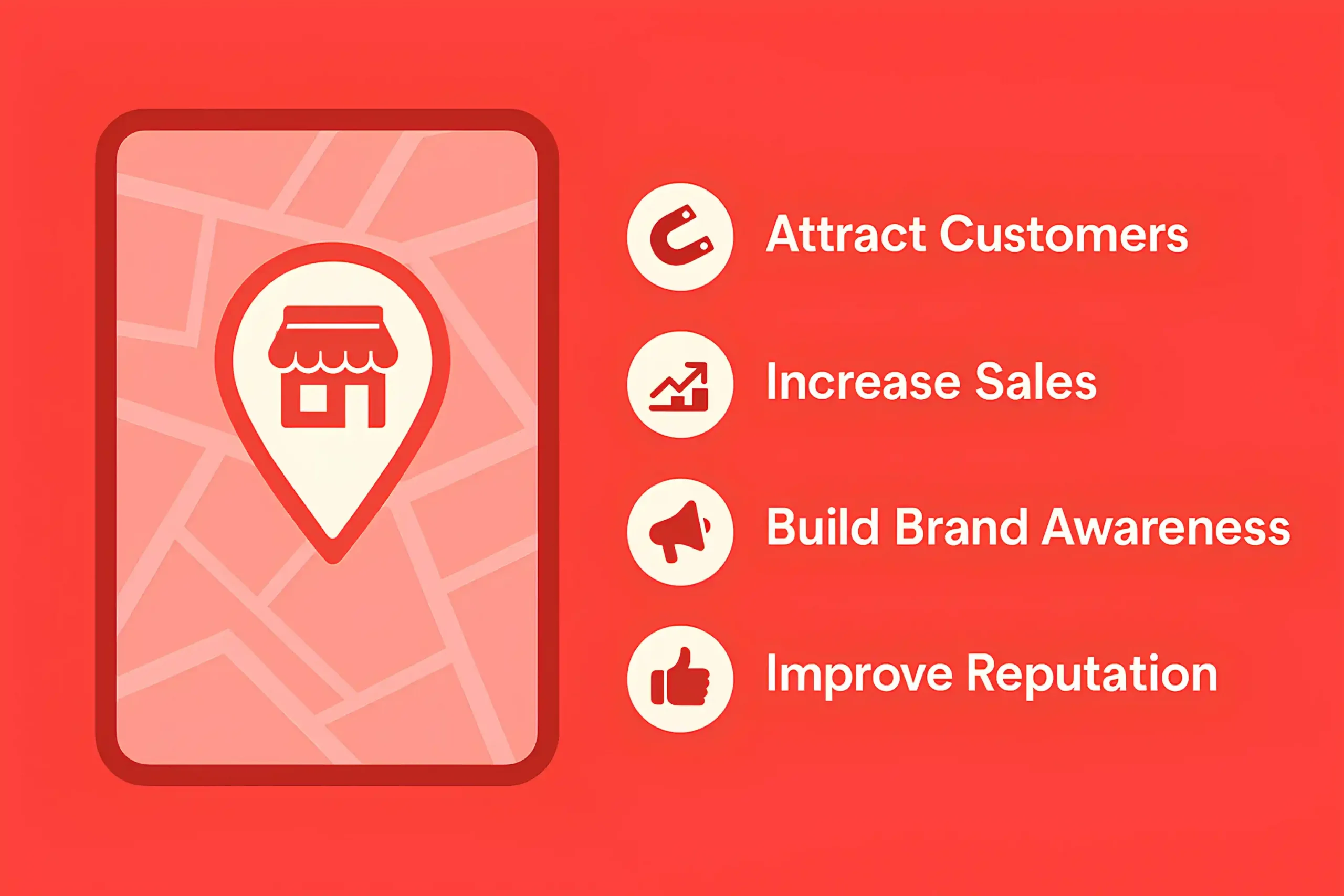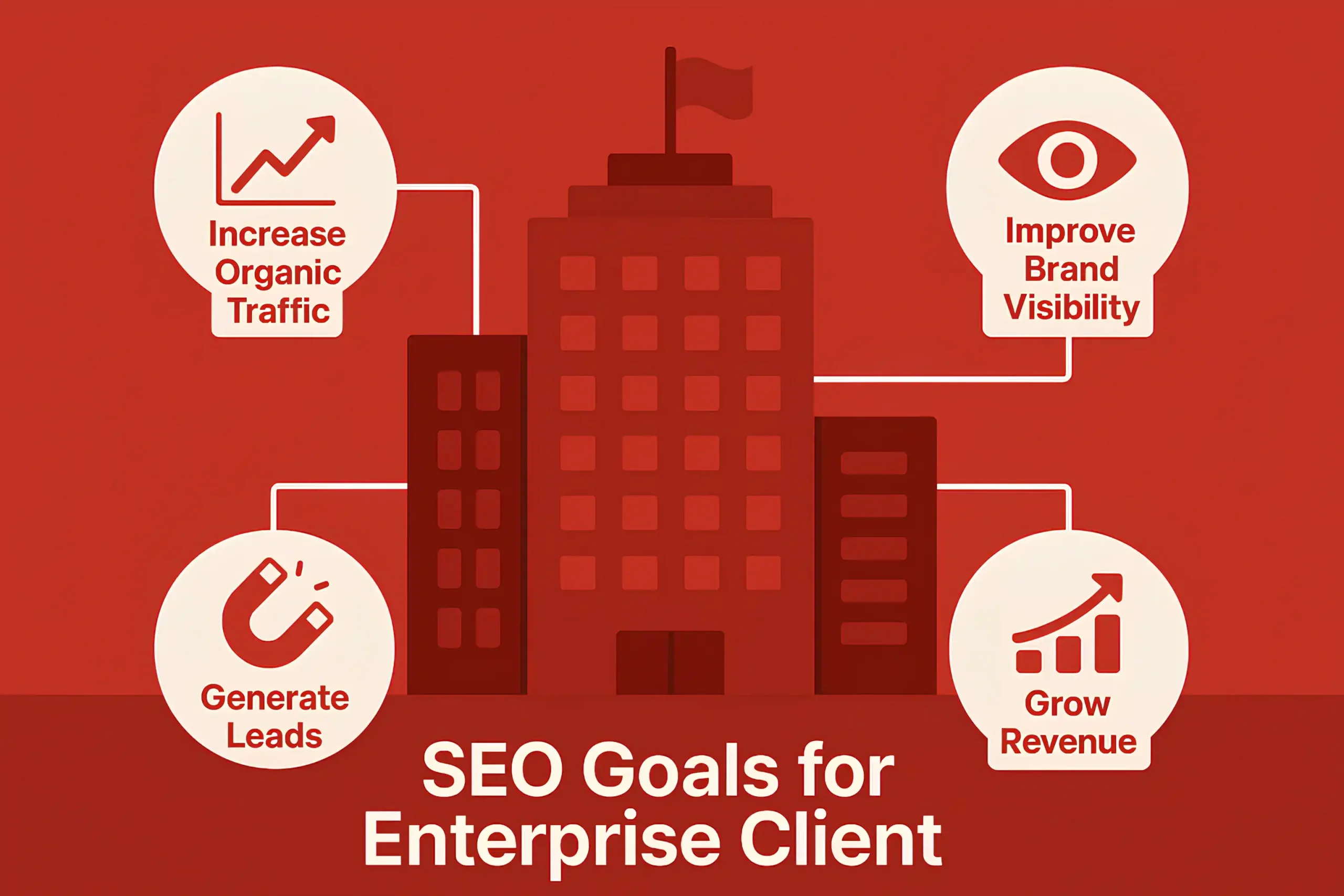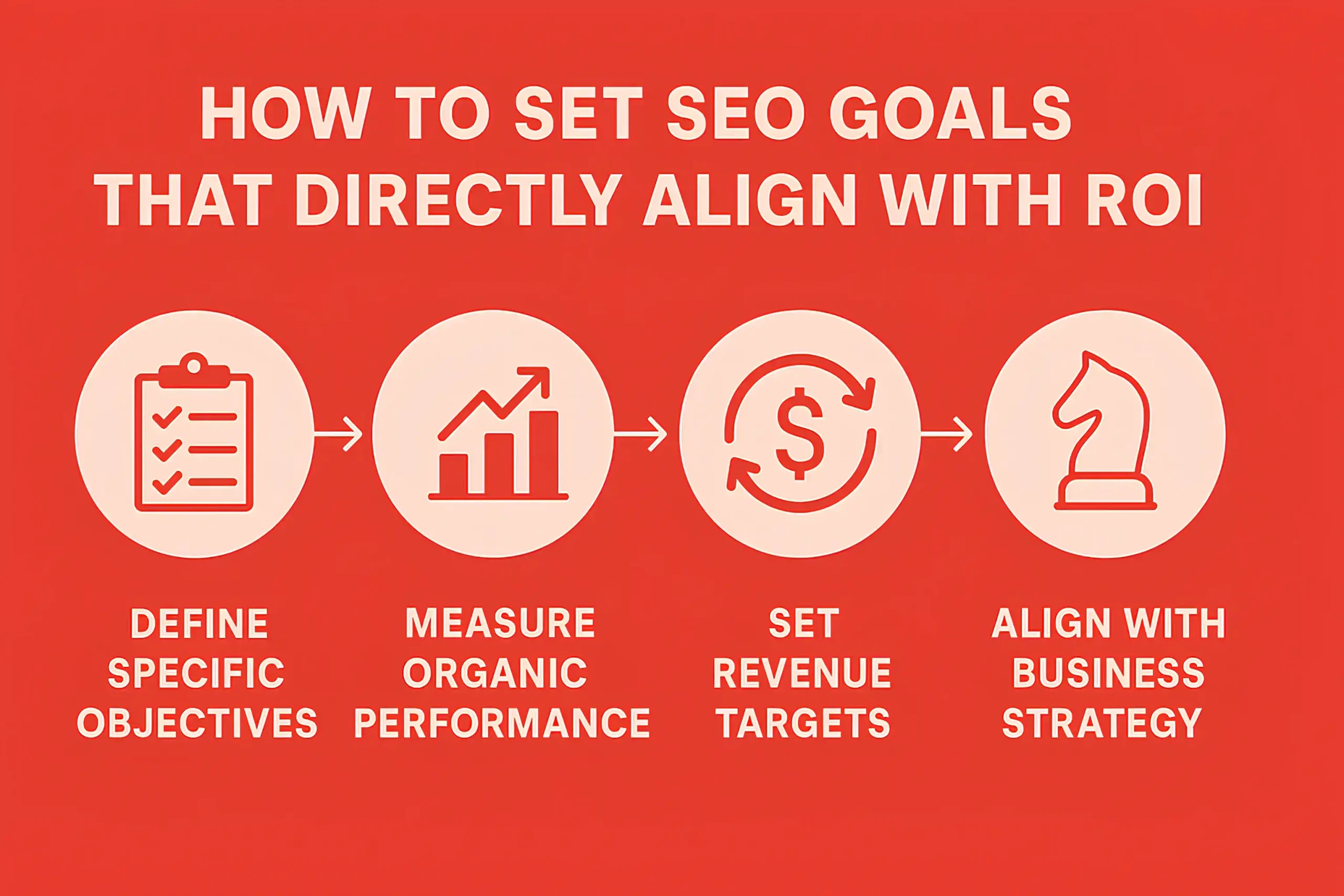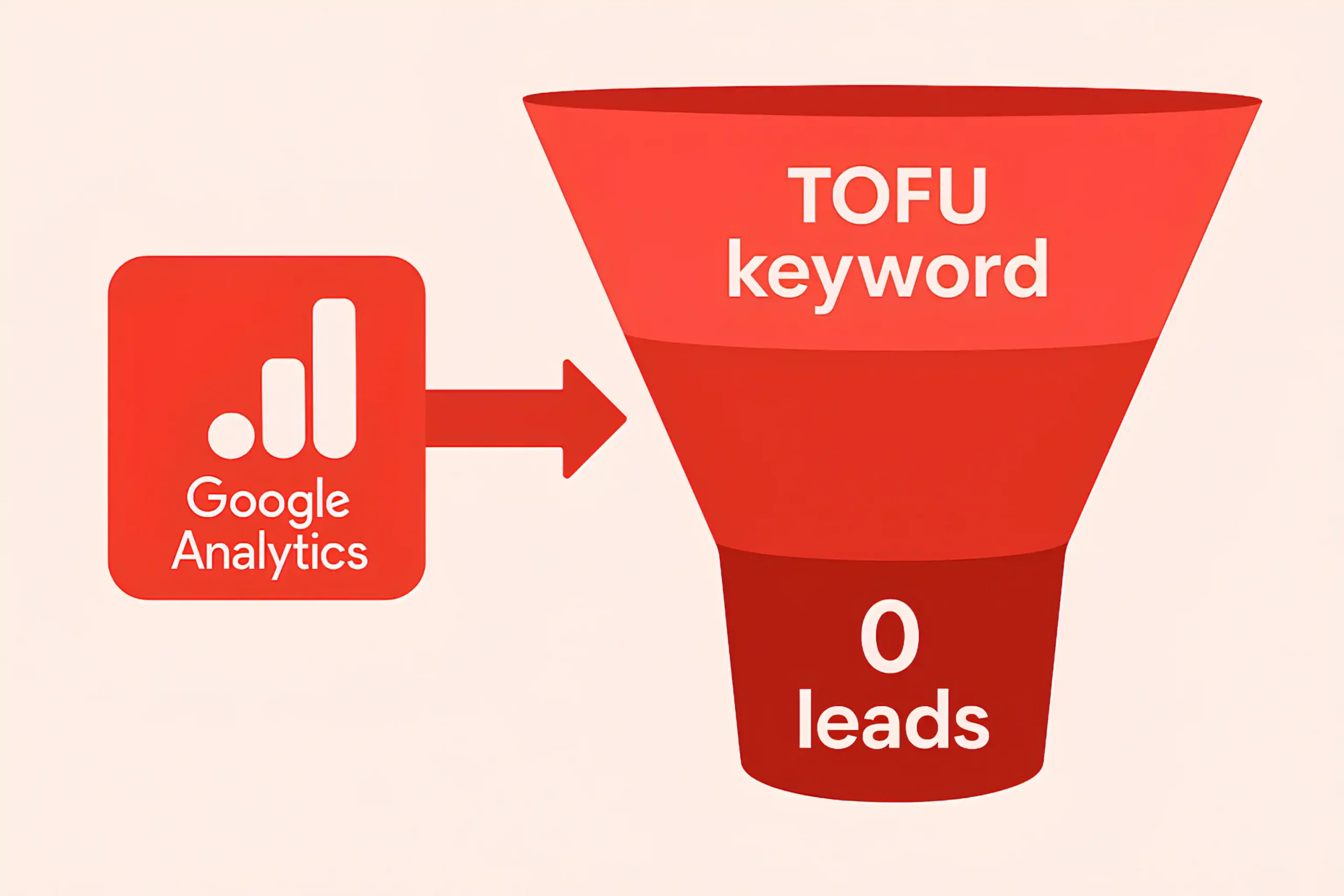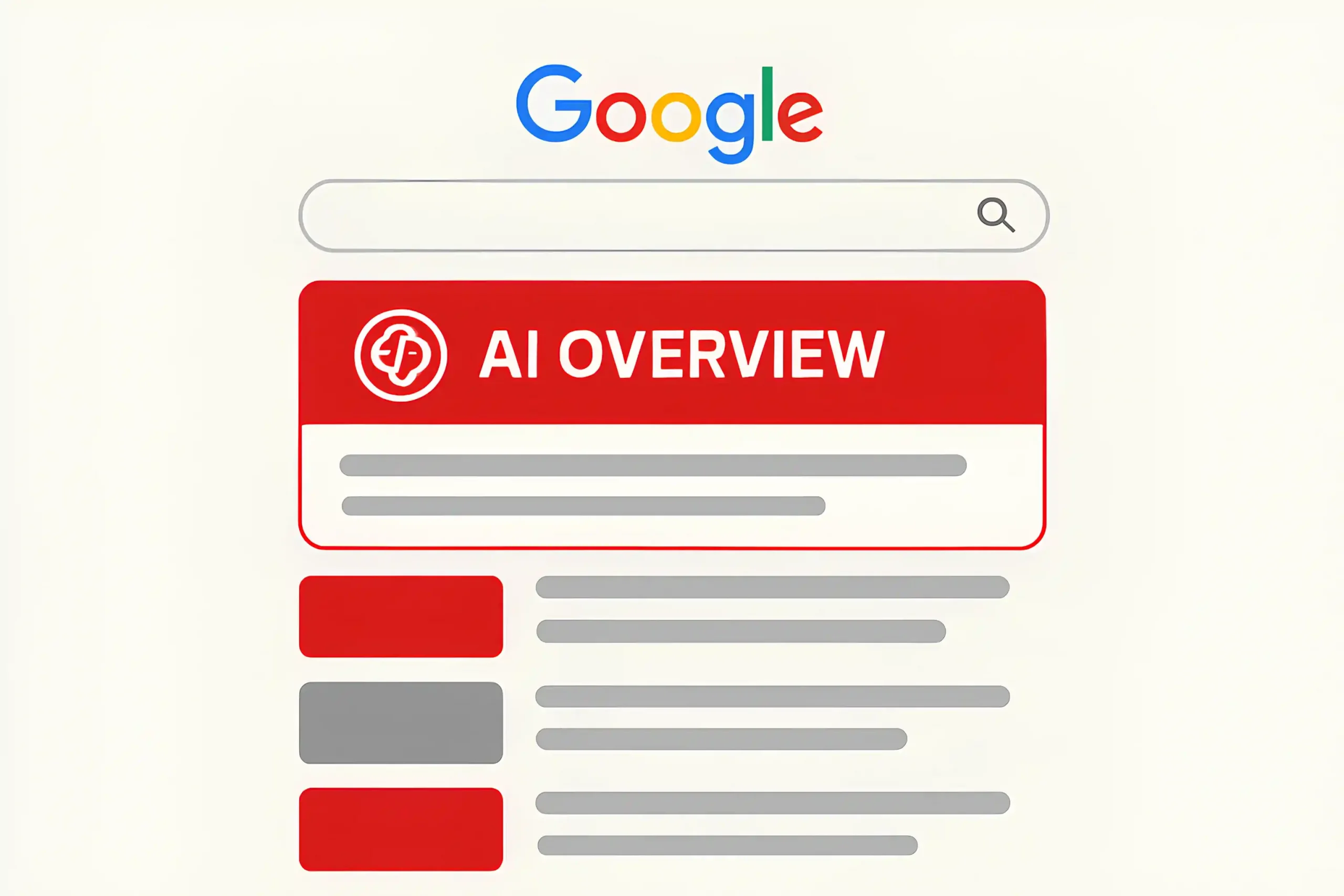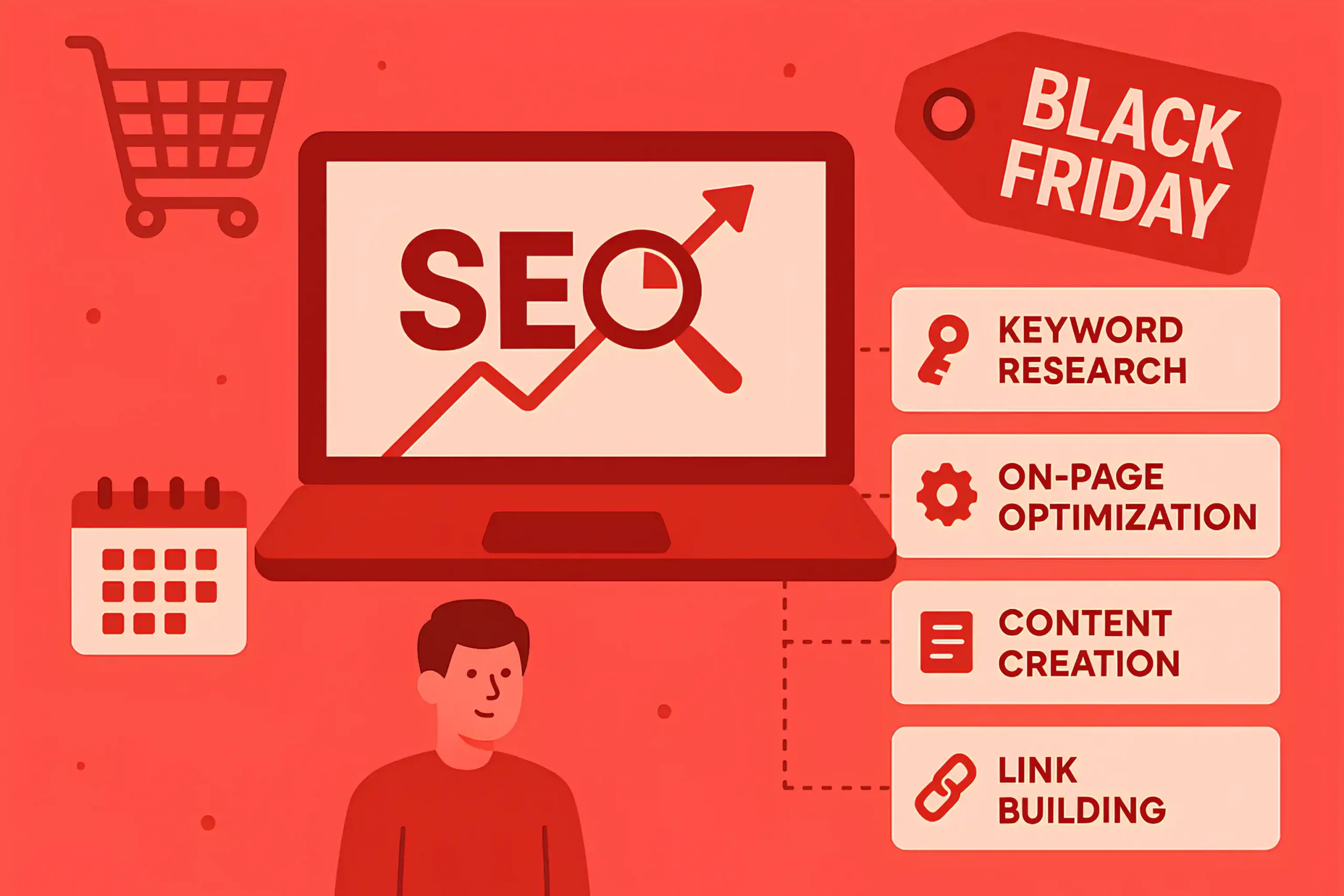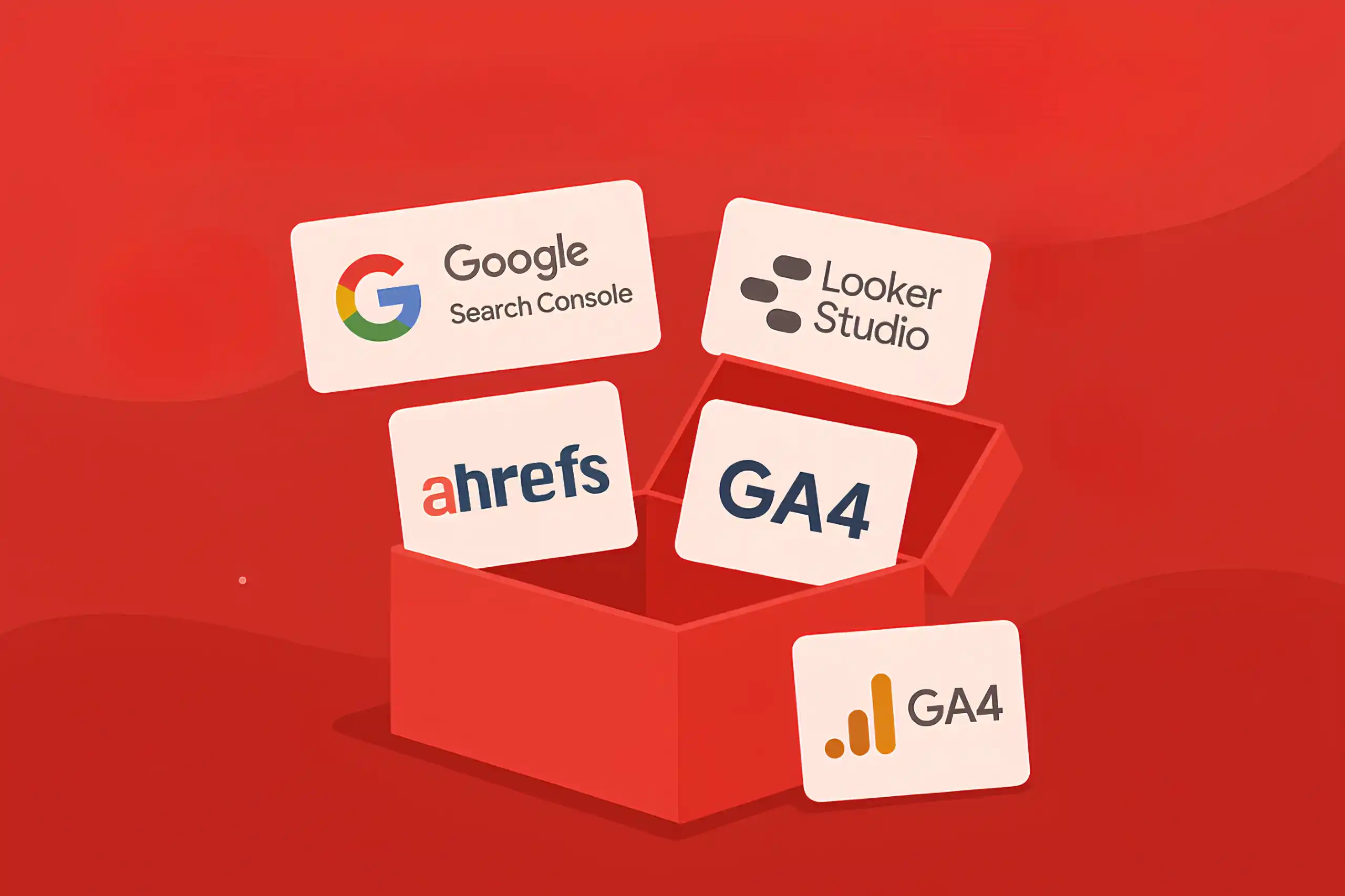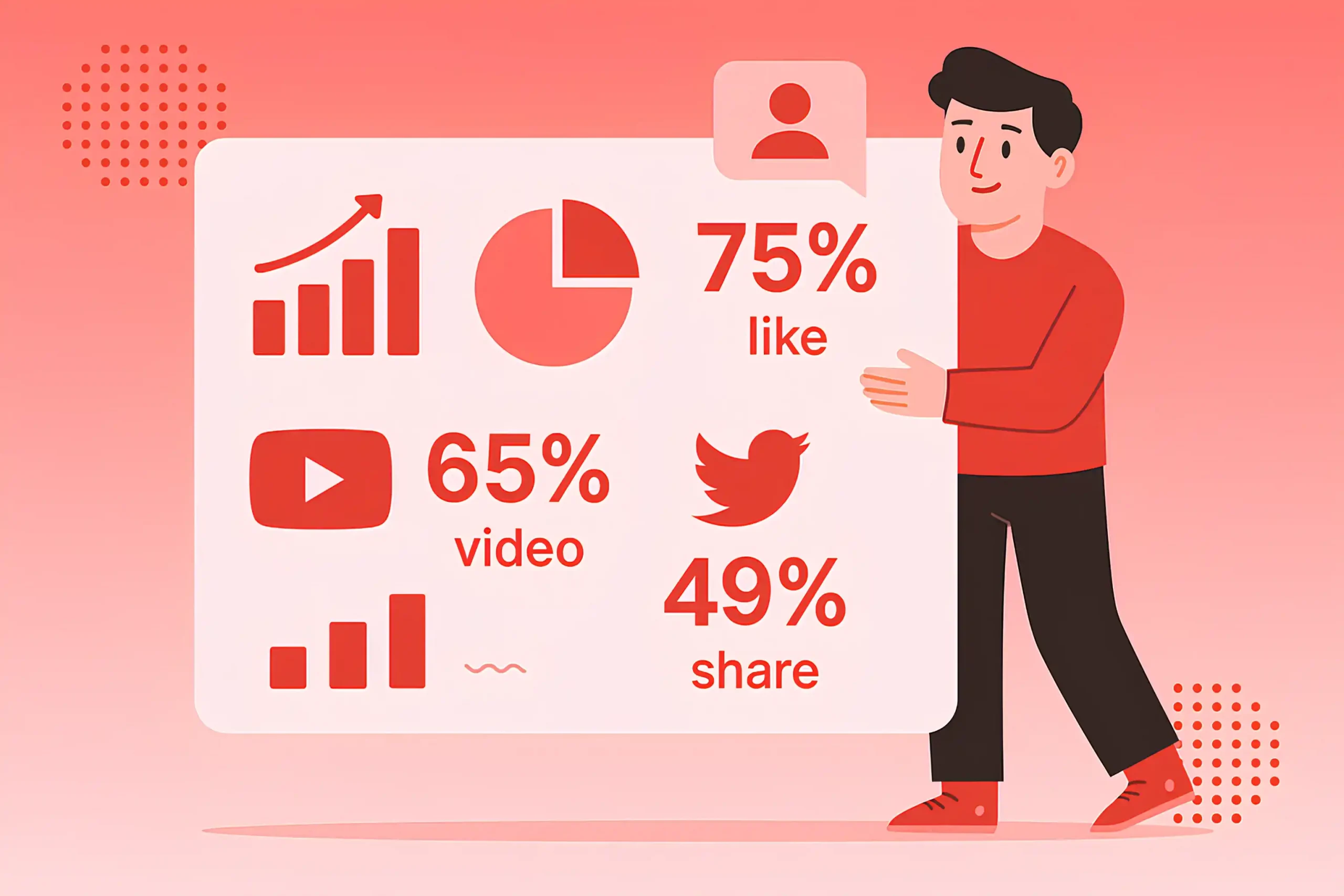Believe it or not, many SEO agencies and freelancers still deliver services without clear KPIs, realistic forecasting, or a structured plan. Too often, they rely on broad objectives such as “increase traffic” or “rank for more keywords.”
They rarely address the deeper challenges that define success. However, generic goals won’t get you very far. With AI-powered search reducing clicks, Google shifting how it indexes content, and competition becoming fiercer across every niche, businesses need SEO strategies that do more than track rankings.
In this guide, I’ll break down how to set smarter SEO goals that move beyond unclear metrics and drive measurable results. If you’re tired of broad promises and want a clear path that keeps your SEO investment accountable, you’re in the right place.
Ready to Scale Your SEO?
Book a complimentary 30-minute strategy call to discuss your goals and explore how we can assist you.
Top SEO Goals at a Glance
| Goal | What It Means | Why It Matters | How We Achieve It |
|---|---|---|---|
| Higher Rankings | Securing top positions for target keywords. | More visibility means more clicks and brand trust. | Keyword research, on-page optimization, and authority building. |
| Increased Traffic | Driving qualified visitors from search engines. | More traffic creates more opportunities for leads and sales. | Content creation, technical SEO, and link building. |
| Better Conversions | Turning visitors into leads or customers. | Traffic is meaningless without revenue impact. | CRO, UX improvements, and intent-focused content. |
| Long-Term Growth | Building sustainable search visibility. | SEO compounds over time, unlike paid ads. | Scalable strategies, evergreen content, and continuous optimization. |
The Importance of Setting The Right SEO Goals
As a CEO and Founder of NEWMEDIA.COM, I would say setting the right SEO goals is what keeps the whole strategy from going off track.. Without clear goals, you don’t really know whether your work is paying off or just keeping you busy.
Traffic numbers, rankings, and impressions might look impressive on a report, but if they don’t connect back to what the business needs, like leads, sales, or brand visibility, they don’t mean much.
Tracking those goals in the right way matters just as much. It’s easy to focus on easy wins, like a jump in keyword positions, but that doesn’t always show the full picture. If you’re not measuring conversions, engagement, or the impact on real business growth, you risk tracking the wrong goals. In other words, you could be putting in months of work without ever proving your value.
On the other hand, when SEO goals are set carefully and tracked properly, you get clarity. You know which efforts are moving the needle and which ones are just noise, helping you make smarter decisions, adjust strategies when needed, and show clients or stakeholders real progress instead of blurry promises.
The Difference Between SEO Goals and KPIs
SEO goals are the big-picture outcomes you want to achieve. They’re like the destination on a road trip. For example, a goal could be “get more leads from organic search” or “increase online sales through Google traffic.” Goals are broad, but they give direction and purpose to your SEO work.
KPIs (Key Performance Indicators) are the markers you use along the way to see if you’re moving toward that goal. They’re like the milestones or road signs that tell you you’re on the right track.
For example, if your goal is “get more leads,” a KPI could be “increase form submissions by 20% in six months.” If your goal is “boost sales,” a KPI might be “grow organic revenue by $50,000 this quarter.”
The main difference is that goals show you where you want to go, while KPIs tell you how you’ll measure progress. Without goals, you don’t know what you’re aiming for.
Without KPIs, you don’t know if you’re getting closer. The two always work together; one sets the vision, and the other keeps it accountable.
What SEO Goals Look Like for Different Business Models
Based on my experience, the goals can look very different depending on the type of business. A SaaS company, for example, usually doesn’t care about getting random traffic that never signs up for a demo or trial.
Their main goal is often tied to free trials, demo requests, or sign-ups for their software.
If a SaaS company sets an SEO goal of “grow organic traffic by 30%,” that’s not enough. The real goal should sound more like “increase organic trial signups by 20% in the next six months.”
A practical way to track this is by following how many people visit blog posts or landing pages, then click through to try the software.
Boost Your Organic Results
Turn your website into a lead-generating machine through smart SEO.
Get a ProposalFor B2B companies, the story is different. Their sales cycles are usually longer, so the SEO goal can’t just be about quick conversions. Instead, the focus is on building visibility with the right decision-makers and collecting leads.
A solid B2B SEO goal might be “grow organic form submissions from qualified leads by 15% this quarter” or “rank in the top three for five key industry terms used by buyers.”
In practice, this means looking at how SEO brings in whitepaper downloads, webinar registrations, or quote requests, not just raw traffic.
If you’re interested in B2B SEO services, contact us for a custom proposal.
If you’re doing SEO for local businesses, like a dentist, plumber, or restaurant, have even more specific SEO goals. For them, the goal isn’t global visibility; it’s being found in their city or neighborhood.
A dentist might set a goal like “increase calls and appointment bookings from Google Business Profile by 25%.” Tracking here goes beyond website traffic; you need to measure map rankings, direction requests, and phone calls that come directly from local search results.
eCommerce businesses focus on sales, plain and simple. But the SEO goals still need to be specific. Instead of “increase product page traffic,” a stronger goal would be “grow organic revenue by 30% in Q3” or “increase organic sales of our new product line by 15%.”
Measuring this involves connecting SEO performance with eCommerce tracking tools so you can see which products are selling from organic search. It’s not enough to bring visitors to the store; you need to see how many added items to the cart and completed a purchase.
Stay Ahead in SEO
Generate specific Critical Path
What you'll get:
- Weekly SEO insights
- Exclusive case studies
- Early access to resources
Subscribe
Media websites, publishers, or blogs may have another angle. Their SEO goals often center on page views, ad revenue, or subscriptions. A publisher might set a goal like “increase organic traffic to news articles by 50% over six months” or “grow newsletter signups from organic traffic by 10%.”
I think what matters here is not just traffic volume but how often readers return, how long they stay on the site, and whether they engage with more than one article.
Even nonprofits or educational institutions can set SEO goals that make sense for them. Instead of just tracking sales, they might want more donations, volunteers, or sign-ups for community programs.
A realistic goal could be “increase organic traffic to donation pages by 20% before year-end” or “grow organic registrations for free events by 15%.”
Our SEO Services
B2B SEO Services
Drive qualified traffic and boost visibility with tailored SEO solutions
Enterprise SEO Services
Get sustainable growth and higher ROI with data-driven SEO services
SaaS SEO Services
Outrank your competitors and win more customers with expert SEO
Technical SEO Services
Unlock your website’s full potential with powerful, results-focused SEO.
The point is, SEO goals are never one-size-fits-all. Each business model has to tie SEO back to what success looks like for them. The best practice is always the same: keep goals simple, connect them to outcomes that matter to the business, and make sure you’re able to measure those outcomes clearly.
Top SEO Goals for Enterprise Clients
When you’re running SEO campaigns for enterprise clients, SEO goals become much bigger in scale and often more complex. The main goals for these companies usually go beyond simple traffic growth.
They care about things like dominating visibility for high-value keywords across entire industries, protecting their brand reputation in search, and expanding into new markets or countries.
An enterprise client might set goals such as “grow organic revenue in North America by 25%,” “rank in the top three for 50+ industry terms,” or “improve the organic visibility of all product categories across 10 international markets.”
These aren’t small, isolated targets; they’re strategic goals that directly connect SEO to business growth.
You know that the challenge is that enterprise SEO is harder to track than it looks. These companies often have thousands of web pages, multiple products, and different teams managing different parts of the site.
For example, one team may focus on driving sales, while another may only care about brand visibility or thought leadership. Without careful planning, SEO reporting for an enterprise can easily turn into a mess of numbers that don’t tell the real story.
That’s why it’s so important to choose an SEO agency that has real experience with enterprise SEO, because managing this scale requires strategy and the right systems in place.
How to Set SEO Goals That Directly Align With ROI
You won’t believe it, but this is advanced territory because it requires connecting organic search performance with actual dollars, not just clicks or rankings. The first step is to understand the true value of each conversion. For example, if you’re a SaaS company and you know that every demo request is worth $500 on average in pipeline value, then your SEO goals should reflect that.
Instead of saying “increase demo requests,” you might set a goal like “grow organic demo requests by 30% in Q3, adding $150,000 to the pipeline.” That’s how you move from unclear metrics into SEO ROI-focused metrics.
For eCommerce SEO, this means connecting SEO efforts with sales data at the product level. A strong ROI-driven goal might be: “Increase organic revenue for high-margin products by 20% this quarter” rather than simply “rank #1 for X keyword.”
If you know that certain product categories drive more profit, it’s smarter to focus SEO goals there instead of tracking keywords that may bring traffic but low revenue.
B2B and enterprise companies often need to get even more granular. Here, the sales cycles are long (As I already said), and not every lead is equal. The advanced way to set ROI-driven goals is to integrate SEO tracking with CRM systems like Salesforce or HubSpot (That’s what I use).
This way, you can track which leads came from organic search and how many eventually closed as customers. An example of a clear ROI-aligned goal would be: “Generate 50 new qualified leads from organic search that convert into at least $250,000 in closed deals within six months.
There are also cases where pursuing ROI alignment too aggressively can go wrong. For example, if you only set goals around immediate sales, you may ignore brand-building or top-of-funnel content that meets customers’ needs over the long term.
In those cases, the best practice is to combine goals: short-term ROI goals (sales, leads) paired with long-term growth goals (authority, brand visibility, content engagement).
Mistakes That Kill the SEO ROI
One of the biggest mistakes that destroys ROI is tracking the wrong metrics. Believe me, too many businesses set their SEO strategy around traffic growth without ever asking what kind of traffic they’re generating.
Remember, you can double your visitors and still not earn a single new customer if the intent is off. A classic case is publishing endless informational blogs that bring thousands of visitors, but none of them are looking to buy.
That’s why you should make sure your SEO partner always provides clean and makes sense SEO reporting. When you track not just impressions and rankings, but conversions and revenue tied to search, it becomes clear which content is driving real business and which content is just filling the analytics dashboard.
Another mistake comes from falling for the lure of cheap SEO or agencies that promise results at rock-bottom pricing. Low-cost providers often build irrelevant or spammy backlinks, recycle the same cookie-cutter content for multiple clients, or target random keywords that look good in a report but deliver no financial return.
In the short term, it might look like progress, but over time, it usually results in wasted budgets or, worse, penalties from Google. I mean, not every low-cost solution is harmful; sometimes a small business with limited needs can see value from starter SEO packages. But for serious growth, it makes no sense.
There’s also the trap of believing in guaranteed SEO services. Whenever someone guarantees rankings within a fixed timeline, it’s a red flag. Search results are influenced by too many variables: competitors, algorithm updates, changes in search behavior, for anyone to promise certainty.
Finally, another costly error is failing to align SEO with actual business goals. Many companies still operate with generic strategies that don’t tie back to ROI.
For instance, an e-commerce store might obsess over blog content while ignoring product pages that generate revenue, or a B2B company might try to rank for broad, top-of-funnel terms while competitors dominate high-intent searches that convert into leads.
A proper SEO proposal should clearly map out how each activity links to revenue, whether that’s through product sales, lead generation, or long-term brand authority. Without a direct connection, ROI becomes nearly impossible to prove.
How to Course-Correct SEO Goals When Things Don’t Move
Sometimes the market forces a goal change. If the SERP is dominated by zero-click answers or AI summaries, switch from “traffic growth” to “share of voice” on priority queries, growth in branded search, or assisted conversions from organic touches.
If the total search demand for a product is tiny, move the SEO goal to content that supports sales enablement (comparison hubs, ROI pages, integration pages) or shift the channel mix to YouTube and partner content where buyers still click.
You can also reset your goals after big shifts such as a core update, a migration, or a pricing change. Don’t compare apples to oranges. Use clean cuts: measure non-brand organic only, by page group, with a new day-zero.
Consider the operational side, because execution speed decides whether goals are even reachable. Slow dev queues, legal reviews, localization backlogs, and CMS limits can kill the progress.
Track operational KPIs next to your SEO KPIs: average time from ticket to production, % of planned tasks shipped each sprint, content pieces published vs. approved, links secured vs. pitched, and the lead time from brief to live page.
If these numbers are bad, fix the process first, or you’ll keep missing goals that were perfectly reasonable.
How Often Should I Reevaluate My SEO Goals?
SEO goals aren’t meant to sit untouched for years (Like many businesses think). Search changes too quickly: algorithms shift, competitors adjust, and industries evolve.
A good rule of thumb is to review your SEO goals at least once a quarter to keep you close enough to the numbers to spot problems before they grow, but not so close that you’re constantly second-guessing every weekly fluctuation.
I mean, the frequency depends on your industry. Fast-moving sectors like SaaS, e-commerce, and media often need more regular adjustments. For instance, a SaaS company launching new features every few months should re-evaluate SEO goals whenever the product roadmap shifts.
On the other hand, e-commerce businesses usually revisit SEO goals before big seasonal pushes, like Black Friday or the holiday season, because search demand and buyer intent change dramatically.
For local businesses, such as dentists or home services, goals can stay steady longer, but they should still be checked whenever there are major changes in service areas, competition, or customer behavior.
Re-evaluation also becomes essential when clear signs point to misalignment. If you see sudden traffic growth but sales or leads are flat, it’s time to question whether you’re tracking the right goals.
The biggest mistake businesses make is changing SEO goals too often without a plan. If you reset targets every time a keyword ranking drops, you’ll never give strategies enough time to work.
To avoid spoiling overall production, tie re-evaluation moments to milestones instead of emotions. For example, assess your SEO goals after a Google core update, a site migration, or at the end of a sales quarter. This way, changes are based on evidence, not panic.
A best practice is to use combined goals. Keep one stable long-term outcome, like “increase organic revenue by 20% year over year,” then set shorter 60–90 day supporting goals around technical fixes, link-building campaigns, or content launches to make it easier to re-evaluate without losing the bigger picture.
Pro Tip: Tools like Google Search Console, GA4, and Looker Studio dashboards make these check-ins easier by showing both quick wins and long-term trends side by side.
How Many SEO Goals Should I Set at Once?
You don’t need a long list of SEO goals to be successful. In fact, having too many at once usually spreads your focus too thin and makes it harder to track what’s working.
I believe a realistic approach is to set just a few clear goals at a time, usually two or three, and make sure each one connects directly to what matters most for the business (That’s how I generally do).
The number of goals you set depends on your resources, the size of your team, and the stage your business is in. For example, a small local business with one person handling marketing may only be able to focus on a single goal, like getting more calls from Google Business Profile.
But an enterprise company with dedicated SEO, content, and development teams can handle multiple combined goals at once, such as improving technical performance, growing organic revenue in a new market, and expanding brand visibility.
It’s just important to know how to prioritize them.
What Tools Help Track SEO Goal Progress?
You don’t always need complicated setups to track your SEO goals. The tools you choose really depend on the scale of your business and how advanced your goals are.
For most websites, Google Search Console and GA4 are enough to measure the basics like impressions, clicks, conversions, and revenue from organic traffic.
If you’re running a bigger operation, platforms like Ahrefs, SEMrush, or Screaming Frog give you deeper insights into rankings, backlinks, and technical performance.
However, not every goal requires an SEO tool. Sometimes you just need a clear system to keep yourself or your team accountable. A simple Notion page, a ClickUp board, or even a shared Google Sheet is more useful than an overloaded analytics dashboard.
If your goal is to publish ten new optimized pages in a quarter or to secure a set number of quality backlinks, a project management tool is often all you need to track progress.


